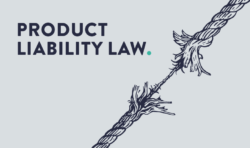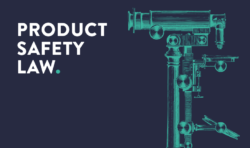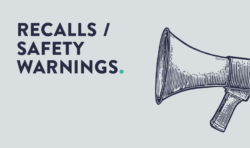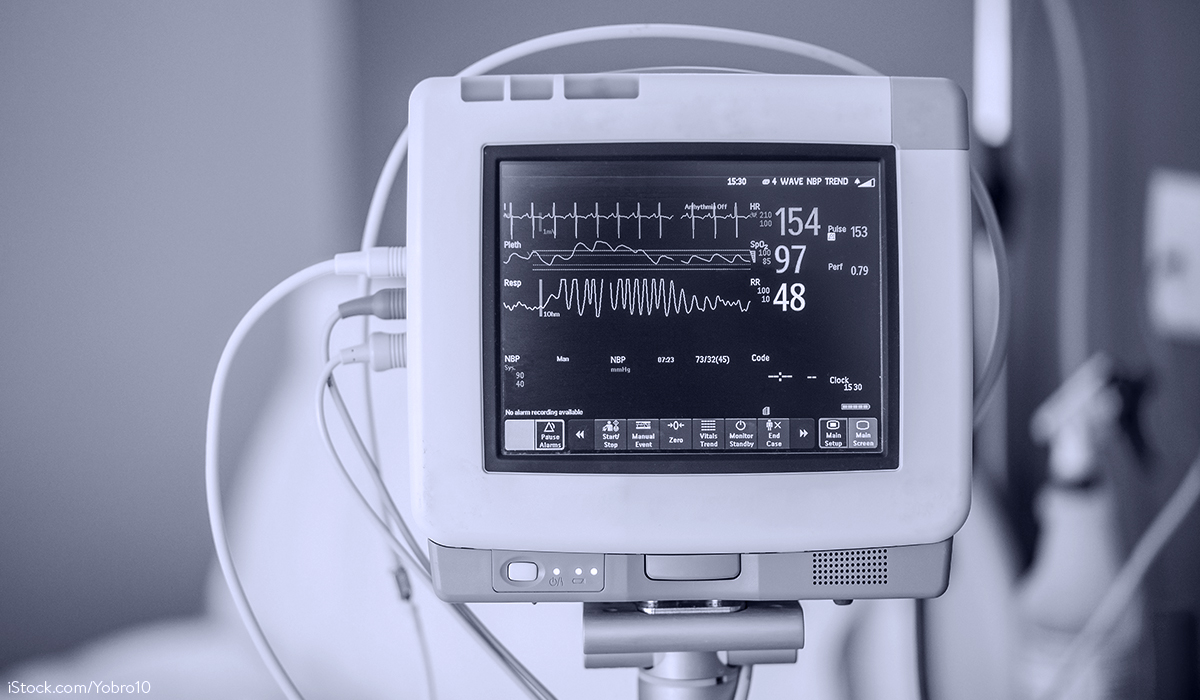A. The new product safety regulation
Shortly before Christmas, a consolidated version of the new Product Safety Regulation (GPSR) circulated for the first time, after the corresponding press release on the preliminary agreement between the European Parliament and the Council was published on 29.11.2022. In the press release could be read the usual phrases on such occasions: According to this, the new EU regulation is to ensure that only safe products are placed on the market in the European single market, regardless of the distribution channel (stationary and online). Conversely, consumers are to be better protected because the regulation is intended to reduce the number of dangerous products. As correct and important as these motives of the legislator are – for the economic actors, it is primarily a matter of dealing with the new obligations and grasping the modified requirements for the marketability of consumer products.
The Product Safety Regulation is the successor legislation to Directive 2001/95/EC (so-called General Product Safety Directive). Such a reform of consumer product law was actually supposed to take place back in 2013, when the European Commission published the proposal for a product safety and market surveillance package; this explicitly included the draft regulation on consumer product safety (COM(2013) 78 final). Because the legislative package at that time had not been brought to a successful conclusion, in particular because of the dispute over the “indication of origin” (“made in”) in Art. 7 of the draft regulation on consumer product safety, the package was subsequently broken down into its essential components: First, the new EU Market Surveillance Regulation 2019 was adopted (the so-called MÜ-VO applies EU-wide from 16.07.2021). And subsequently, work on the Product Safety Regulation was taken up at full speed (first draft of GPSR-E dated 30.06.2021) and quickly brought to a successful conclusion.
Specifically, the following changes in the new consumer products law are worth highlighting:
- Recognition of the fulfilment service provider (Art. 3 No. 12) and qualification of the fulfilment service provider as an economic operator (Art. 3 No. 13) – however, there are no specific obligations of the fulfilment service provider (in contrast to Sec. 6 para. 6 ProdSG).
- Advancing the action-specific scope of application in distance selling or online trading for all consumer products. Accordingly, consumer products are already considered to be made available on the market if they are only offered for sale (online) (Art. 4).
- New criteria and elements for assessing the safety of products, such as confusability with food, attractiveness to children or required cybersecurity features (Art. 7).
- Obligation for manufacturers to carry out an internal risk analysis and to prepare technical documentation for each consumer product, with no de minimis limit (Art. 8 para. 4).
- Obligation to keep technical documentation for ten years (Art. 8 para. 5).
- Specification of the substantial change by three criteria (Art. 12 para. 2).
- Linking the marketability of all consumer products to the existence of an EU economic operator (Art. 15).
- Possible extension of specific traceability requirements (Art. 17).
- New (information) obligations of economic operators in case of distance selling already at the moment of offering the product (Art. 18).
- New obligations of economic operators in case of accidents related to consumer products (Art. 19).
- Specific obligations of sales platforms (online marketplaces; Art. 20).
- Extension of the information obligations of economic operators and sales platforms towards consumers (Art. 33).
- Detailed requirements for the implementation of a recall (Art. 34).
- Obligation of the economic operators to remedy the situation in case of recall by offering repair, replacement of the recalled product with a safe one of the same type or adequate refund of the value of the recalled product (Art. 35).
Market surveillance relevant to practice is essentially based on the EU Market Surveillance Regulation (Art. 21 para. 1).
The EU Product Safety Regulation shall apply EU-wide 18 months after entry into force, Art. 48 subpara. 2 GPSR. On the same day, the General Product Safety Directive is to be repealed, Art. 45 para. 1 GPSR.
B. Need for adaptation in national product safety law
It is true that national product safety law was not extensively reformed until 2021, when the Act on the Provision of Products on the Market (Product Safety Act – ProdSG) of 27.07.2021 replaced the ProdSG 2011 and the new Act on Market Surveillance and Ensuring the Conformity of Products (Market Surveillance Act – MüG) of 09.06.2021 was enacted. However, this did not imply from the outset that national product safety law would now again remain unaffected for a long period of time. On the contrary, it was clear to the national legislator that the next adjustments would have to be made in the near future, with a view to the Product Safety Regulation, which was already being drafted at the time.
Even though the Product Safety Regulation will not apply throughout the EU until 18 months after its entry into force, experience shows that work on the national reform will probably be in full swing as early as 2023. It will be interesting to see what national legislators do with the new ProdSG in 2021. As an EU regulation, the GPSR expressly does not require implementation. In any case, only a few topics will require mandatory national regulation in the future ProdSG: Essentially, language issues in the instructions for use, the law governing the GS mark, and the specific administrative offences and criminal law. Whether there can still be room in the future for national obligations, e.g. of the fulfilment service provider, in addition to the Product Safety Regulation, which is silent in this respect (cf. Sec. 6 para. 6 ProdSG), is also likely to be a hotly debated question.
C. The new machinery regulation
Shortly after the GPSR, the European Commission also published a press release stating that the preliminary agreement between the Council and the European Parliament in the trilogue was very welcome. The new machinery regulation will then react to the new technologies for machinery products, which will bring new product risks and challenges.
The new Machinery Regulation is unquestionably of overriding importance within the EU and Germany, respectively, because its scope of application is conceivably broad: machines in the legal sense are not only consumer products (B2C products) and work equipment (B2B products). The spectrum ranges from hand-guided machines that the buyer purchases in the construction or supermarket to robots, 3-D printers or entire industrial plants (in the sense of machinery plants).
The following aspects should be in particular focus:
- Third party certification will be required in future for only six categories of machinery (ultimately this is the replacement for the previous Annex IV machinery, for which, however, internal production control with Module A can also be considered if and to the extent that harmonized standards are applied)
- High-risk machinery products (Part A of Annex I) include, first, portable cartridge-operated fixing and other impact machinery; second, safety components with fully or partially self-evolving behaviourusing using machine learning approaches ensuring safety functions; and third, machinery embedding systems with fully or partially self-evolving behaviour using machine learning approaches ensuring safety functions that have not been independently on the market, in respect only to those systems.
- The majority of the original high-risk machine products will be moved to a new Part B of Annex I. To this extent, it remains the case that internal production control is eligible, but only if harmonized standards are applied.
- The digital instruction handbook is made possible (Art. 10 para. 7); however, this continues to be limited: If the purchaser requests a paper version, it must be made available to him. In addition, there must be a brief instruction with the safety-relevant information in each case if the purchaser is a consumer (Art. 10 para. 7).
- In the case of partly completed machinery, which is important in the B2B sector, the door to digitalization is often opened (Art. 10a).
- What is meant by substantial change, which is so relevant especially in the case of machinery, is now defined in the Machinery Ordinance (Art. 3 No. 16).
Incidentally, the long-awaited adaptation of European machinery law to the New Legislative Framework (NLF) is important. In the future, machinery law will thus know the definitions that have been valid throughout the EU since 01.01.2010, such as making available on the market or importer (Art. 3) – and there will also be tailored obligations for each economic operator (Artt. 10 ff.). The safe use of artificial intelligence systems, on the other hand, will not be the subject of the Machinery Regulation. The two regulations are to be decoupled, which is why the original Art. 9 has been deleted.
The effective date of the Machinery Ordinance is to be 42 months after its entry into force.
Experts currently assume that the text of the standard will be published in the Official Journal of the EU in the first or even second quarter of 2023.
D. Reforms in sectoral product safety law
In other sectoral product safety legislation, the following EU legal acts will also require special attention in 2023:
- Revision of Directive 2009/48/EC (so-called EC Toys Directive).
- Revision of Directive 2009/125/EC (so-called Ecodesign Directive)
- Revision of Regulation (EU) No. 305/2011 (so-called EU Construction Products Regulation).
In this respect, the activities at EU level should be followed closely, even if the procedures in all three sectors are likely to take some time. In the area of construction products and ecodesign law in particular, the changes will in all likelihood be substantial, while in toy law there is likely to be more of an evolution than a revolution. Legislative work on toy law has also been rather slow so far – in any case, a first draft is not yet available (but should circulate soon). What is certain is that there will be a toy regulation in the future.
The economic actors should particularly keep an eye on the further development of the so-called digital product passport. The digital product passport is to be the subject of the separate Chapter III of the new Ecodesign Regulation (with Artt. 8 ff.). In addition, the requirements for the digital product passport are also specified in Annex III of the new Ecodesign Regulation (i.e. no longer a directive!). Even if it is initially only intended to apply in the area of application of ecodesign law (according to the current status, more specific delegated acts of the Commission will also be required to “sharpen up” the regulations), it should not be overlooked that this is a “trial balloon” which, if it works, is likely to be transferred to other sectors and products in the near future. This does not necessarily have to be limited to the harmonized product area (“CE”). In the future, regulation in consumer product law is also conceivable, i.e. in the new product safety regulation (see A. above). However, the fact that the digital product passport opens the door to the digitization of product law, which has long been longed for by considerable sections of industry, should not obscure the fact that the new obligations will (at least initially) supplement the existing analog obligations. In other words, instructions for use that can then probably be called up via QR code will not mean that paper form can be dispensed with for this reason alone. The costs of ensuring product compliance for industry will therefore (continue to) increase.
E. Enforcement suspension
Shortly before Christmas, the European Commission issued another recommendation relevant for the industry concerned with regard to the enforcement of the current ecodesign legislation. Notice 2022/C 469/03 of 09.12.2022 deals with the following two implementing acts:
- Regulation (EU) 2019/424 (servers and data storage products)
- Regulation (EU) 2019/1784 (welding equipment)
Due to the ongoing supply crisis for semiconductor chips and the resulting chip shortage, the Commission is in favor of waiving enforcement of the current ecodesign legislation in the two sectors until further notice for reasons of proportionality. In both sectors, stricter ecodesign requirements – long known – will apply from 01.01.2023. It is important to note that the Commission can only suggest a suspension of enforcement in this respect – the market surveillance authorities of the EU member states are solely responsible. However, in view of the experience gained since the beginning of the Corona pandemic, it can be assumed that the EU member states will adhere to this “recommendation”. After all, they should have no interest in exposing themselves to the accusation of disproportionate (and thus illegal) enforcement. In any case, the Commission will not initiate infringement proceedings against EU Member States that refrain from enforcement (as requested) in view of the critical supply situation.
The economic operators concerned should therefore seek contact with the competent authorities in the relevant sales regions in order to find out whether and, if so, for how long they can rely on the suspension of enforcement. In this case, “outdated” products that do not yet comply with the new requirements may continue to be placed on the market.
F. Guidelines on the Product Safety Act (LV 46)
After the new “Blue Guide” was published at the end of June 2022 (which, incidentally, has so far – as far as can be seen – not led to any distortions in the enforcement of the European Product Safety Act), many national authorities are now eagerly awaiting a new edition of the Guidelines to the Product Safety Act (LV 46). In any case, the currently valid version (3rd edition 2013) is now outdated. Since it took no more than 1.5 years for the 3rd edition of the LASI guidelines to be published in March 2013 after the ProdSG 2011 came into force, a timely publication can be expected, especially since (according to reports) work on this is already being carried out at full speed. The importance of the LASI guidelines for national enforcement practice should not be underestimated. Last but not least, they also provide helpful orientation for the economic actors as well as occasional privileges that are anything but undesirable. One can think, for example, of the approval of the so-called “trademark solution” in the context of manufacturer labeling in accordance with Sec. 6 para. 1 1st sentence No. 2 ProdSG, which would otherwise not be readily apparent from the legal normative text.
Do you have any questions about this news, or would you like to discuss the news with the author? Please contact: Dr. Carsten Schucht






